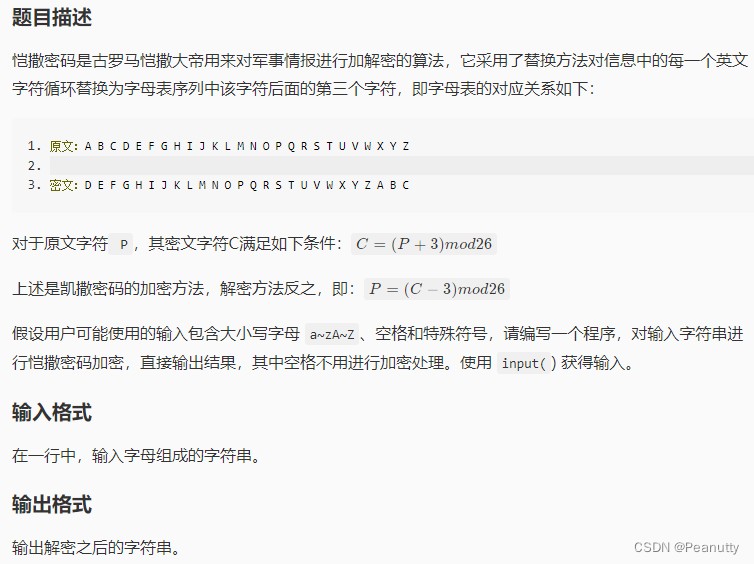文章目录
- 一、题目
- 二、题解
- 2.1、写法1
- 2.2、写法2,stream流
- 2.3、写法3,方法引用
一、题目


二、题解
2.1、写法1
普通写法, 遍历每个字符进行加密
public static void main1 (String[] args) {Scanner sc = new Scanner(System.in);String strs = sc.nextLine();char[] chss = strs.toCharArray();for(int i = 0;i < chss.length; i++){if(chss[i] <= 'z' && chss[i] >= 'a'){chss[i]+=3;if(chss[i] > 'z'){chss[i]-=26;}}else if(chss[i] <= 'Z' && chss[i] >= 'A'){chss[i]+=3;if(chss[i] > 'Z'){chss[i]-=26;}}}for(char c : chss){System.out.print(c);}}
2.2、写法2,stream流
stream流写法,用map对每个字符进行加密处理
- Arrays.stream() 只接收 对象数组或int long double数组,所以不能用Arrays.stream()将char[]数组转换为流
- 用 chars() 将 String 转换为 整数流
- mapToObj() 将整数流映射 回 字符流
//写法2public static void main2 (String[] args) {Scanner sc = new Scanner(System.in);String strs = sc.nextLine();//Arrays.stream() 只接收 对象数组或int long double数组//chars() 将String转换为 整数流//mapToObj 将整数流映射 回 字符流strs.chars().map(c -> {if ((c >= 'a' && c <= 'z') || (c >= 'A' && c <= 'Z')) {c += 3;if ((c > 'z' && c <= 'z' + 3) || (c > 'Z' && c <= 'Z' + 3)) {c -= 26;}}return c;}).mapToObj(c -> (char) c).forEach(System.out::print);}
2.3、写法3,方法引用
在写法2的基础上
- 将map方法(接收int类型,返回int类型)中的lambda表达式改写为方法引用
- 静态方法引用, 类型::方法名
- mapToObj() 将整数流映射 回 字符流
public class kaisaCode {//写法3 方法引用public static void main3 (String[] args) {Scanner sc = new Scanner(System.in);String strs = sc.nextLine();//静态方法引用strs.chars().map(kaisaCode::jiami).mapToObj(c -> (char) c).forEach(System.out::print);}//静态方法public static int jiami(int c){if ((c >= 'a' && c <= 'z') || (c >= 'A' && c <= 'Z')) {c += 3;if ((c > 'z' && c <= 'z' + 3) || (c > 'Z' && c <= 'Z' + 3)) {c -= 26;}}return c;}
}











)



, ‘%Y%v‘))



